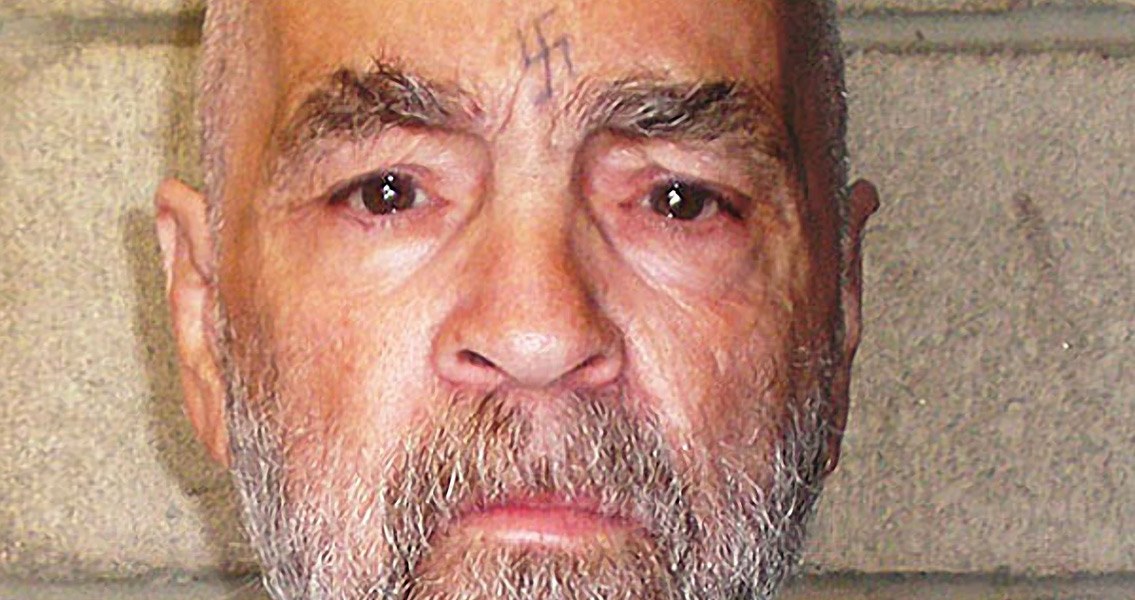<![CDATA[On 25th January, 1971, Charles Manson, Susan Atkins, Leslie Van Houten, and Patricia Krenwinkle were convicted of the sickening murders of Sharon Tate and six others. The verdict brought to an end a trial which at several points had threatened to descend into farce, the actions of the Manson Family - the dangerous cult which had grown up around Charles Manson - turning the Grand Jury Testimony and Manson's trial into a bizarre, macabre circus. For months members of the Manson Family, hair shaved off and X's carved into their foreheads, had blocked the entrance to the courthouse while chanting and singing. The bizarre rituals, totally at odds with the brutal murders which had taken place, brought into shocking clarity the deranged reality of those who had been pulled in by Manson's aura. The murders had taken place over two nights in August 1969. On the night of the 9th August four members of the Manson Family, under Charles Manson's orders, burst into the Beverley Hills home of Sharon Tate, the pregnant wife of Roman Polanski. The first victim of the ferocious rampage was 18 year old Steve Parent, a friend of Tate's caretaker who was shot as the cult members approached the house. Tate, along with her guests: hair stylist Jay Sebring, writer Wojciech Frykowski and coffee company heiress Abigail Folger, were rounded up into the house's living room and tied up. Over the course of the evening the four were killed in shocking fashion, viciously and repeatedly stabbed and beaten. Susan Atkins used Tate's blood to write the word 'Pig' on the front door of the house, before the murderers left the bloody scene. The next night members of the Manson Family, this time accompanied by Charles Manson himself, murdered wealthy supermarket executive Leno LaBianca and his wife Rosemary. Again, the killings were carried out with cold brutality. Los Angeles was gripped with fear following the shocking, seemingly random homicides, yet for a year the grisly crimes went unsolved. Indeed, the Manson Family's involvement in the murders was only unearthed through chance. In 1969 Manson and several members of the family were arrested on suspicion of vandalising Death Valley National Park, the Mojave Desert location they had been hiding out in since the murders. At the same time Susan Atkins was being held in detention on suspicion of another, unrelated murder. Her confessions pointed to the Manson Family's involvement in the earlier crimes. In the trial, and over the years since, details of the time leading up to the murders and the nature of Manson's cult have come to be revealed. Manson arrived in San Francisco in 1967, after serving jail time in Washington. He quickly became involved in the counter culture movement surrounding the city's Haight-Ashbury district, gaining popularity with his guitar playing and song writing. By this point the idealistic, artist centered movement which had put Haight-Ashbury on the map had started to change, the early 1960s hippies replaced with a darker culture of narcotics and crime. The Manson Family would go onto to become the extreme embodiment of this dark undertone to 1960s counter culture. Manson formed a bizarre, surreal philosophy which took in biblical imagery, 1960s pop culture, and the growing racial tension in the United States. The late 1960s had seen a host of riots erupt in cities across the country, which Manson saw as precursors to an apocalyptic war between black and white people. He told the members of the cult that they could trigger this war, out of the destruction of which he would take on a Messianic role. He called the prophecy 'Helter Skelter', named after The Beatles' song and in reference to coded messages in the band's 'White Album' Manson claimed only he could understand. The brutal murders of high profile celebrities, according to Manson, was a necessary step towards bringing the Manson Family into the public eye, a means to bring more people into the cult. Manson and the three others found guilty on 24th January were all eventually sentenced to death, although California abolished the death penalty the following year, meaning their sentences were reduced to life imprisonment. How Manson managed to attract such a following is a dilemma discussed at length by historians and psychologists to this day. ]]>
Manson Family Convicted of Brutal Murders
